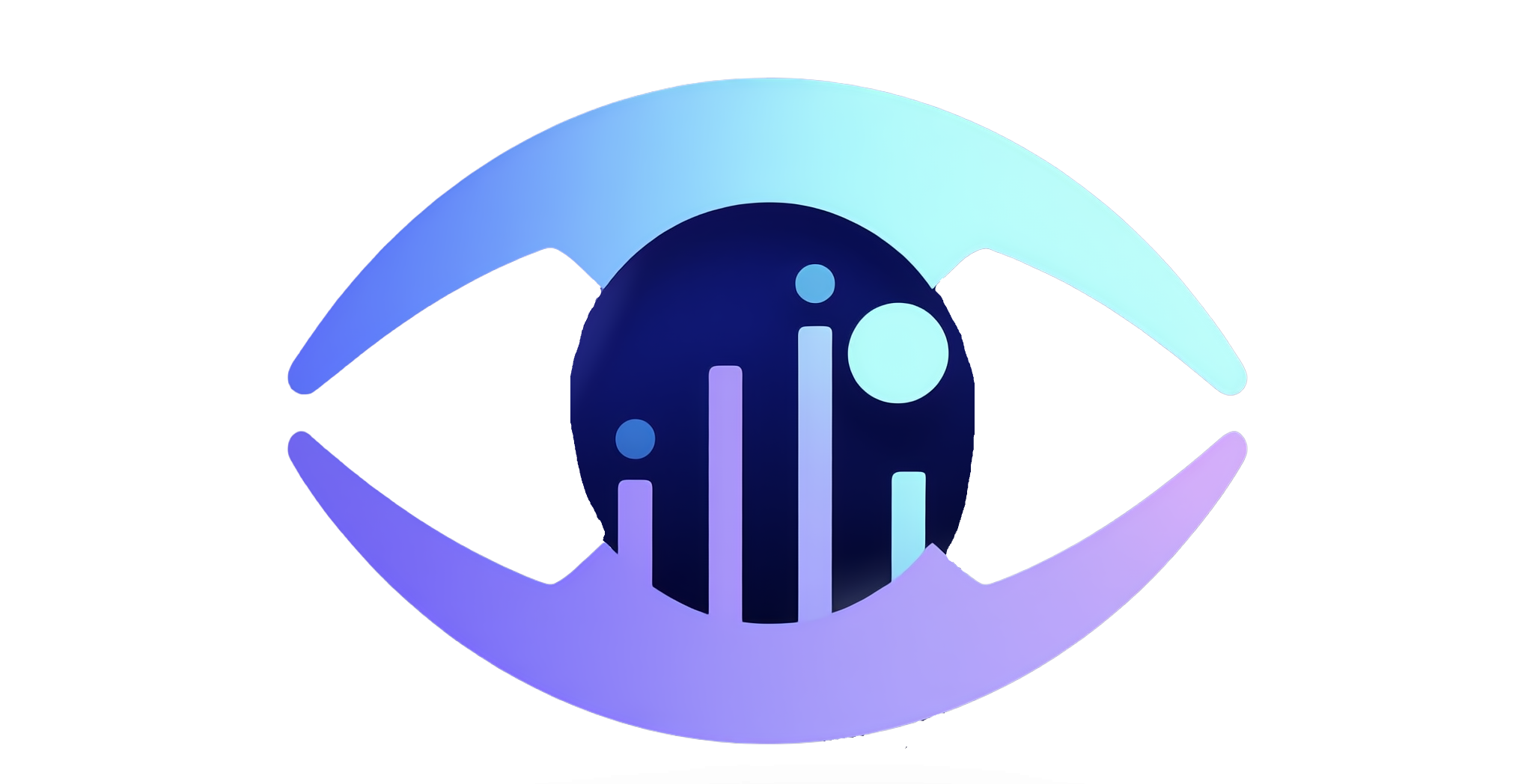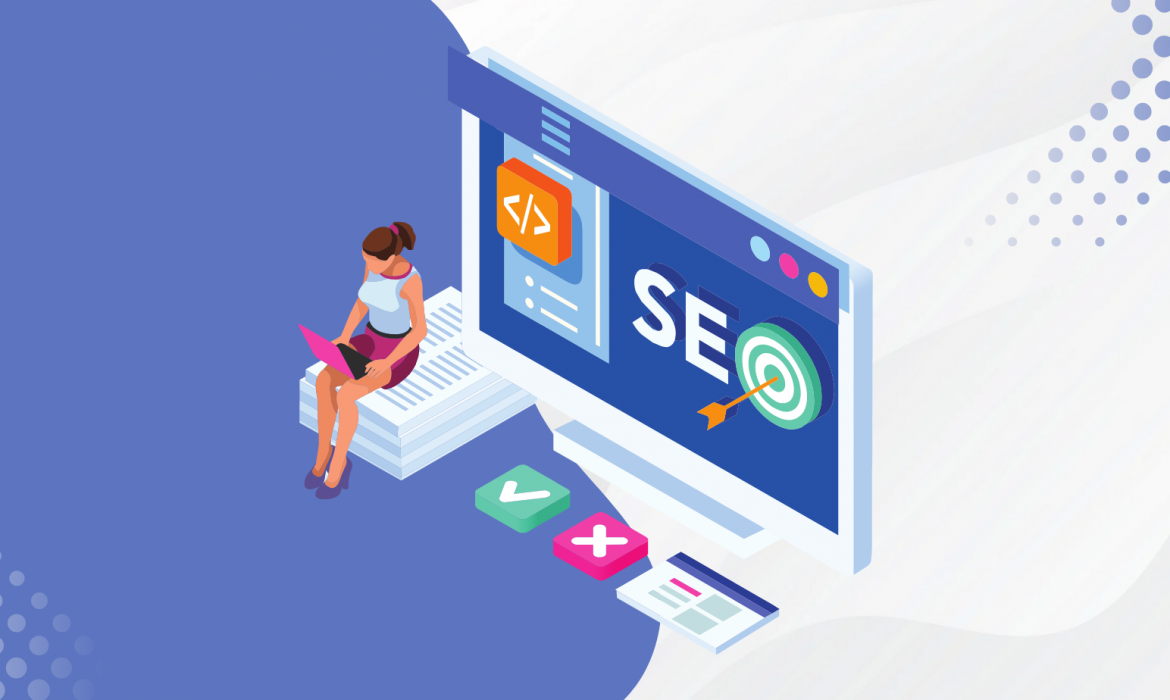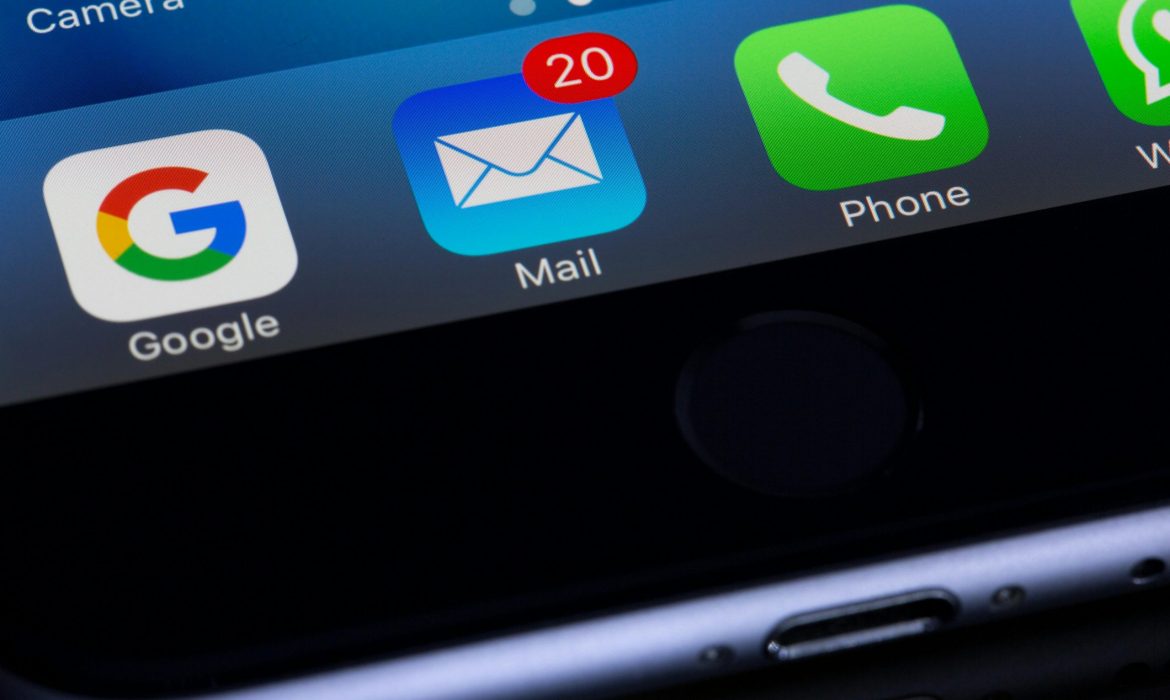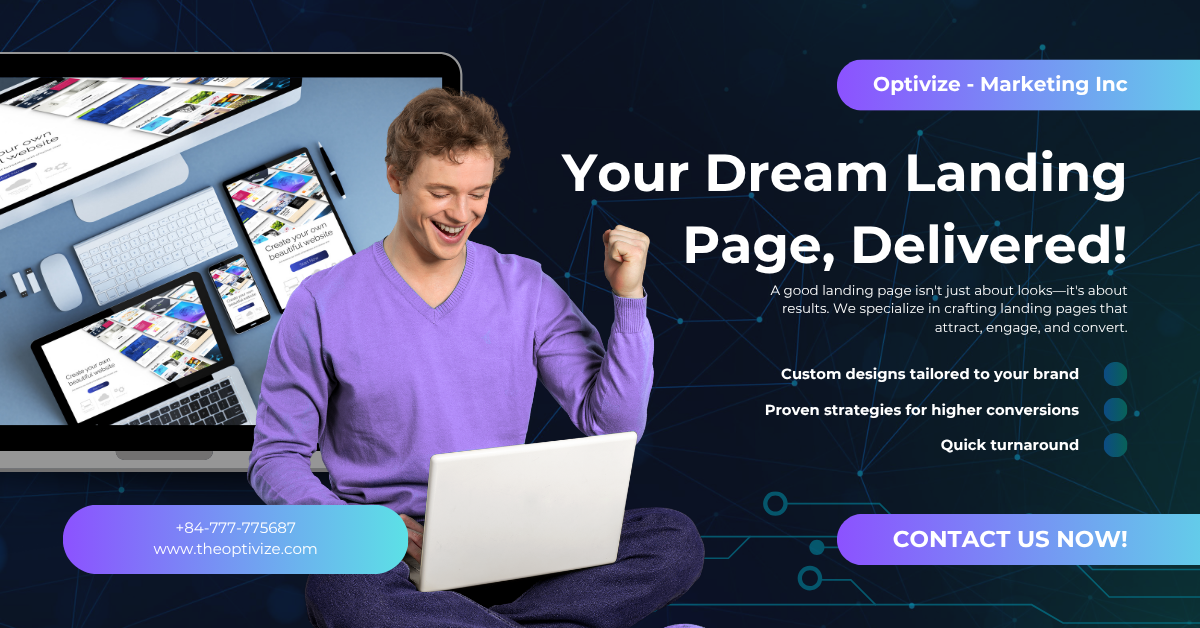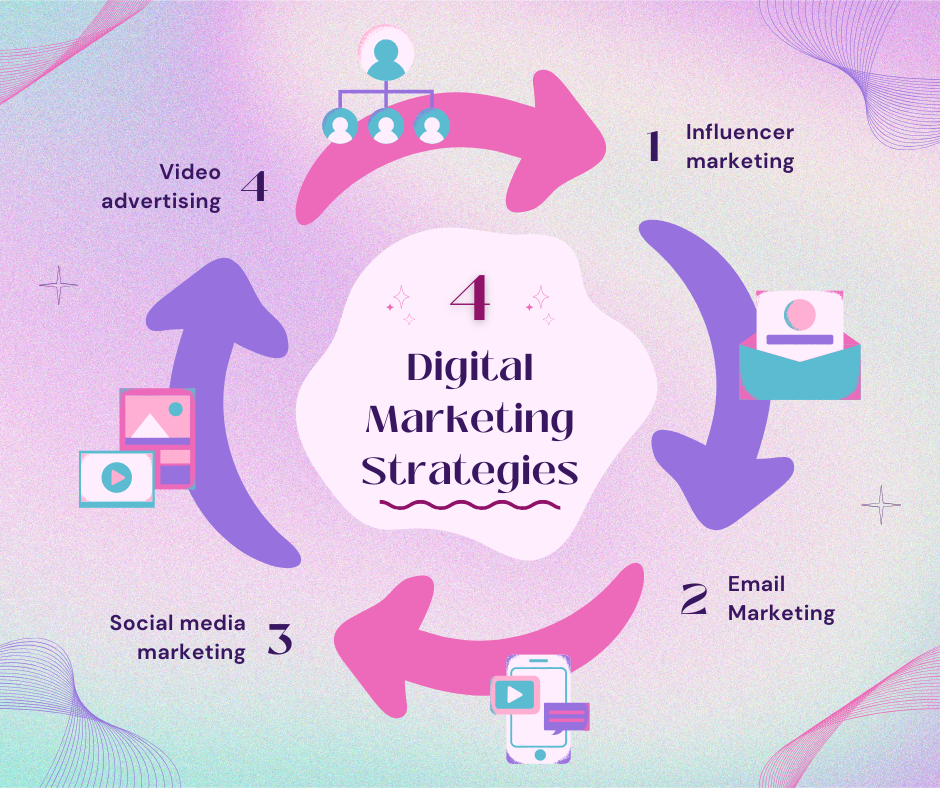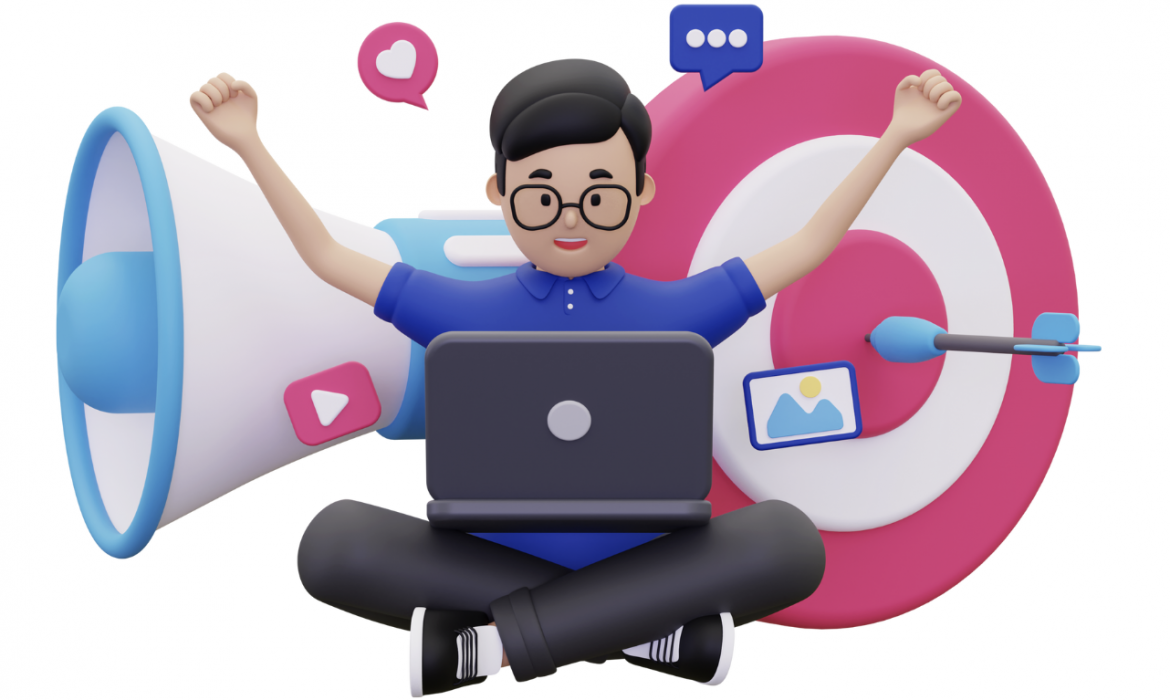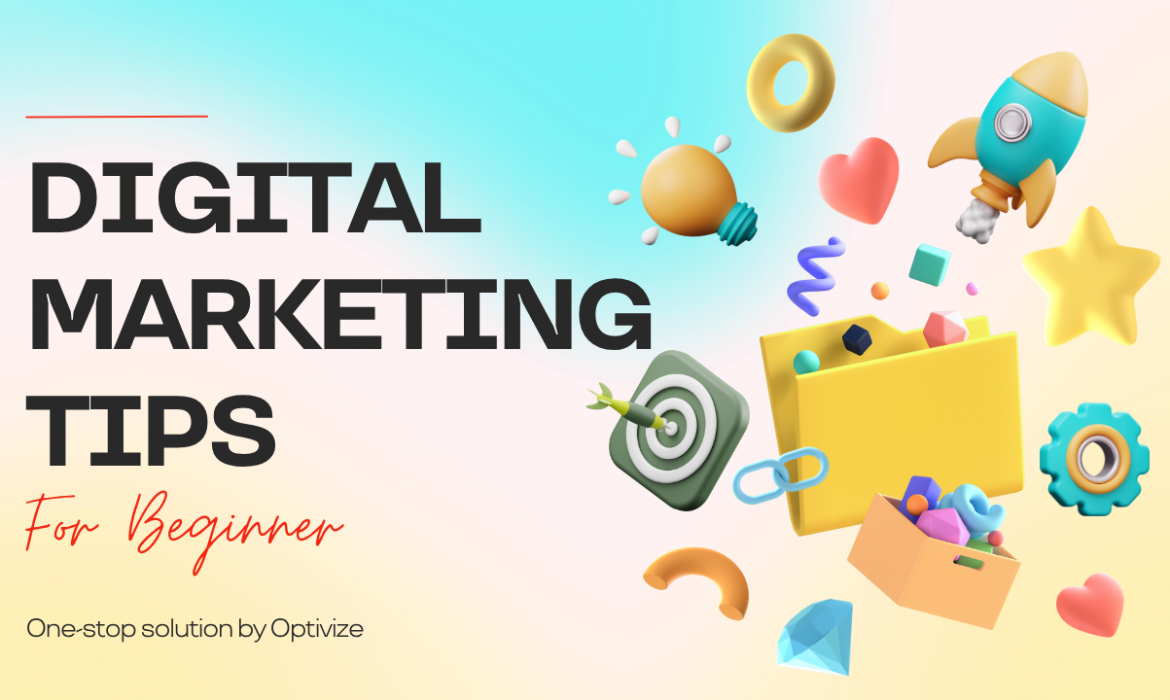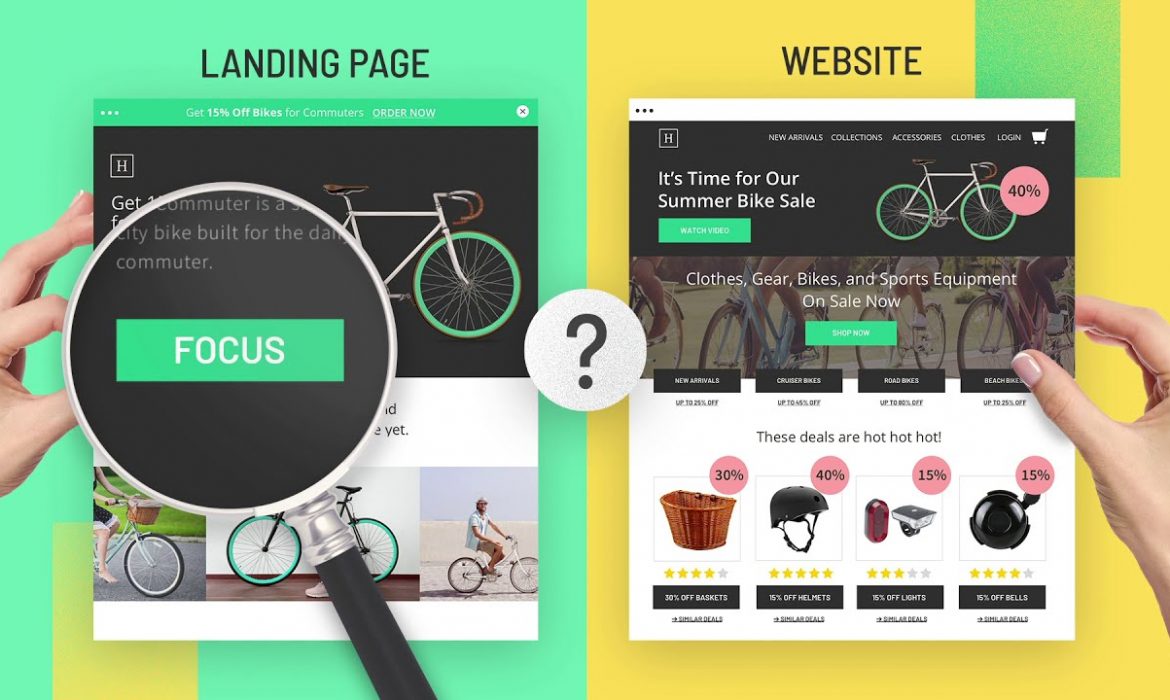Top 5 Google Ads Mistakes Wasting Your Budget (And How to Fix Them)
Running Google Ads but not getting the ROI you expected? You’re not alone. Many businesses burn through their ad budget without realizing they’re making simple, avoidable mistakes.
In this post, we’ll break down the 5 most common Google Ads mistakes, why they cost you money—and most importantly, how to fix them for better performance and results.

1. Targeting the Wrong Keywords
🧨 What’s the problem?
Many advertisers pick broad, generic keywords like “shoes” or “marketing services” thinking it will bring more traffic. Instead, they attract irrelevant clicks with no intent to buy.
💡 How to fix it:
Use long-tail keywords (e.g. “buy men’s leather shoes online”) to attract high-intent users.
Avoid “Broad Match” unless you use Negative Keywords aggressively.
Use tools like Google Keyword Planner or Ubersuggest to find better alternatives.
2. Not Using Negative Keywords
🧨 What’s the problem?
Without negative keywords, Google may show your ad for irrelevant searches. For example, an agency bidding on “SEO services” may appear on searches like “free SEO tools”.
💡 How to fix it:
- Set negative keywords like: “free”, “DIY”, “cheap”, “template”, etc.
- Review the Search Terms Report weekly to find low-intent triggers.
- Build and update a Negative Keywords List for every campaign.
See our full SEO Campaign Checklist for Beginner

3. Poor Ad Copy That Doesn’t Convert
🧨 What’s the problem?
Even if your ad gets impressions, poor copy fails to attract clicks or conversions. Common issues include unclear offers, no CTA, or irrelevant headlines.
💡 How to fix it:
- Include target keyword in the headline and description.
- Use strong CTAs like “Get a Free Quote” or “Book Now”.
- Run A/B tests with different versions of ad copy to see what converts best.
✅ Example Fix:
Instead of → “Best Digital Services”
Use → “Top-Rated SEO Agency – Get Results in 30 Days”
4. Sending Traffic to a Weak Landing Page
🧨 What’s the problem?
If you’re spending on clicks but sending users to a slow, generic, or messy landing page, your conversion rate suffers. High bounce = wasted money.
💡 How to fix it:
- Build dedicated landing pages for each campaign or keyword group.
- Ensure fast load speed, clear offer, benefit-focused copy, and mobile optimization.
- Use conversion tools like exit popups or live chat.
Need help building landing pages? Check our Landing Page Optimization Guide
5. Ignoring Conversion Tracking
🧨 What’s the problem?
Without proper tracking, you can’t measure what’s working—or worse, you scale campaigns blindly and overspend on non-converting clicks.
💡 How to fix it:
- Set up Google Ads Conversion Tracking with proper goals (form fills, calls, purchases).
- Use Google Tag Manager for flexibility.
- Monitor key metrics: CTR, Quality Score, Cost per Conversion, ROAS.
✅ Bonus tip: Connect with Google Analytics 4 (GA4) for deeper insights.
Final Thoughts
If you’re running Google Ads and not seeing results, don’t blame the platform. The problem often lies in strategy, setup, or execution—all of which are fixable.
Avoiding just one of these mistakes could save you hundreds (or thousands) in wasted ad spend.
CTA – Get a Free Google Ads Audit
Not sure where your campaigns are leaking money?
Let us help.
✅ Get a 100% free Google Ads audit from our experts at Optivize.
We’ll review your account, identify issues, and send a custom action plan.
→ Book Your Free Audit Now
No pressure. No contracts. Just real advice.
How to Run Effective Social Media Ads and Livestream Campaigns
Discover how to drive more sales and engagement with social media ads and livestream marketing. Learn strategies, tools, and best practices in this complete guide.
How to Run Effective Social Media Ads and Livestream Campaigns
In today’s digital-first world, brands can’t afford to ignore two powerful tools:
Social media advertising and livestream marketing.
These platforms go beyond just engagement—they’re sales machines when done right.
Whether you’re launching a product, running a limited-time offer, or simply building brand awareness, combining paid ads with livestreaming can help you dominate the attention economy.
Let’s break it down step-by-step.
Why Social Media Ads Are a Must in 2025
Social platforms are where your audience hangs out, shops, and makes decisions.
From TikTok and Instagram to Facebook and YouTube, every platform now supports advanced ad targeting, retargeting, and performance analytics.
✅ Benefits of social media ads:
- Laser-focused targeting by interests, behavior, location, etc.
- Fast results and high ROI (when optimized)
- Easy to test & scale
- Perfect for product launches, flash sales, and lead generation
💡 Pro Tip: Start small. Test 2–3 creatives per ad set and let the data guide your scaling.
Top Social Platforms for Paid Advertising
| Platform | Best For | Notable Ad Features |
|---|---|---|
| Facebook & Instagram | Ecommerce, Local Business, Services | Lookalike audiences, A/B testing, Instagram Shops |
| TikTok | Gen Z, Trendy Products | Spark Ads, Creator marketplace, Native-style ads |
| YouTube | Long-form content, Product Demos | In-stream ads, retargeting, detailed analytics |
| Visual brands, Home/Beauty niches | Product pins, keyword targeting | |
| X (Twitter) | Tech, News, Real-Time Events | Follower-based ads, hashtags |

How to Run Livestream Campaigns That Convert
Livestreaming turns your campaign into a real-time, interactive shopping experience.
It’s one of the fastest-growing tools in ecommerce—especially in Asia.
Why livestreams work:
- Build trust with real-time interaction
- Demo products directly
- Limited-time urgency boosts FOMO
- High viewer-to-buyer conversion rates
Livestreaming Best Practices
1. Plan Your Show Structure:
- Hook (first 30 sec): Tease what’s coming
- Demo: Showcase products clearly
- Engagement: Answer questions live, add polls
- Offer: Create urgency with promo codes or countdown timers
2. Use the Right Platform:
- Facebook Live – for communities and retargeting
- Instagram Live – for visual brands and younger audiences
- TikTok Live – high interaction, better discoverability
- Shopee Live / Amazon Live – integrated with e-commerce checkouts
3. Prep Your Tech:
- Ring light + tripod
- External mic (no one buys with bad audio)
- Strong Wi-Fi
- Product showcase table
- Backup device in case of crash
4. Promote Before You Go Live:
- Run countdown posts
- Email your list
- Run a “reminder” ad (custom audience)
Combine Paid Ads + Livestreams for Explosive Growth
Here’s the secret sauce:
→ Use paid ads to funnel traffic to your livestream.
→ Then retarget viewers with a follow-up offer.
Example Funnel:
- Run TikTok/Facebook ads teasing your livestream
- Host your live event with giveaways and product demos
- Retarget viewers with a special “Thank You” offer
- Upsell in post-live recap posts
Tools That Help You Win
- Meta Ads Manager – for Facebook & Instagram targeting
- TikTok Ads Manager – spark ads, creator campaigns
- OBS Studio or StreamYard – livestream production
- Restream.io – broadcast to multiple platforms
- Google Tag Manager + Meta Pixel – track everything
Final Thoughts
Social media ads and livestreams are no longer just trends—they’re modern sales channels.
When used strategically, they can deliver massive ROI, build your community, and drive explosive growth for your brand.
📈 Want to get started the right way?
→ Optimize your campaign with the right creative, offer, and targeting.
→ Track your KPIs.
→ Improve every time.
Ready to Launch High-Converting Campaigns?
Let our team help you craft winning livestream strategies and ad funnels that sell.
🎥 From TikTok to Facebook to Shopee Live—we’ve helped brands boost engagement and conversions up to 5x.
→ Book a free strategy call with our marketing experts today!
Email Marketing: Still the Most Profitable Channel in 2025
Despite TikTok, AI, and automation, email marketing still delivers the highest ROI in 2025. Learn how to leverage it effectively in your digital strategy.
Email Marketing: Still the Most Profitable Channel in 2025
While digital trends come and go—AI tools, TikTok ads, influencers—email marketing remains king when it comes to ROI.
In fact, according to recent studies, email marketing still delivers an average ROI of $36–$42 for every $1 spent, outperforming paid ads, social, and even SEO in some direct-to-customer scenarios.
So why is email still so powerful in 2025—and how can your business take full advantage of it?
1. Email = Owned Channel
🧨 What’s the problem?
Many businesses rely too heavily on Facebook, Instagram, or Google for traffic. But you don’t own those audiences—platform changes or ad bans can wipe you out overnight.
💡 How to fix it:
- Start collecting emails from day one via pop-ups, lead magnets, and gated content.
- Use email to own your traffic and engage people directly.
- Unlike social, email has 100% reach (if deliverability is good).
✅ Bonus tip: Use double opt-in to build high-quality lists.
2. Email Drives Sales, Not Just Clicks
🧨 What’s the problem?
Too many brands send emails that look good—but don’t convert. Pretty newsletters won’t pay the bills.
💡 How to fix it:
- Send behavior-triggered emails (abandoned cart, viewed product, welcome series).
- Use persuasive copywriting formulas: AIDA, PAS, FAB.
- Split test subject lines, CTAs, and send times for max results.
📌 Read: Landing Page Optimization Guide – because email traffic must land somewhere that converts!

3. It’s Highly Personalized & Segmentable
🧨 What’s the problem?
Blasting the same message to your whole list lowers open rates and increases unsubscribes.
💡 How to fix it:
- Segment your list based on behavior, location, purchase history, or lead source.
- Use merge tags to personalize names, locations, and preferences.
- Send different content based on funnel stage (cold lead ≠ loyal customer).
✅ Tools to try: Klaviyo, Mailchimp, ActiveCampaign, ConvertKit
4. Email Marketing Works for Every Funnel Stage
🧨 What’s the problem?
Most businesses only use email for promotions or newsletters. You’re missing 70% of its value.
💡 How to fix it:
- Top of funnel: Offer lead magnets (ebooks, quizzes, checklists).
- Middle of funnel: Send educational drip sequences, testimonials, and trust-building emails.
- Bottom of funnel: Use scarcity, limited-time offers, and retargeting via email.
✅ Bonus: Post-purchase flows increase LTV and reduce refund rates.
5. Email Integrates with Your Entire Digital Ecosystem
🧨 What’s the problem?
Email is often treated like a silo, disconnected from your website, ads, and CRM.
💡 How to fix it:
- Sync your email platform with your Shopify, CRM, or payment tools.
- Use UTM parameters to track email traffic in Google Analytics.
- Build automation that ties into other channels (email → retargeting → SMS).
“If social media is the cocktail party, then email marketing is the ‘meet up for coffee’. The original 1-to-1 channel.”
Erik Harbison
Build Your Email Strategy with Optivize
We help small businesses design email funnels that actually convert.
From welcome sequences to eCommerce re-engagement flows—we’ll build it, test it, and automate it for you.
Landing Page Optimization Guide: Boost Conversions With Every Click
Learn how to optimize your landing pages for maximum conversions. This guide covers proven strategies, tools, and best practices to turn clicks into customers.
Landing Page Optimization Guide: Boost Conversions With Every Click
Visitors land on your page. They scroll. They leave.
No clicks. No sales. No leads.
Sound familiar? You’re not alone.
That’s why Landing Page Optimization (LPO) isn’t just a “nice to have”—it’s essential for ROI. Whether you’re running paid ads, email campaigns, or SEO efforts, this guide walks you through everything you need to make every click count.
What Is Landing Page Optimization?
Landing Page Optimization (LPO) is the process of improving individual web pages to increase the percentage of visitors who take a desired action—whether it’s making a purchase, signing up, or downloading something.
The goal? More conversions, less bounce.
Think of it as a mix of psychology, design, and data.
Why Landing Page Optimization Matters
📉 Spending $1,000 on ads that land on a bad page = wasted budget.
📈 Spending $1,000 on ads that land on an optimized page = more leads, more revenue, better ROAS.
Benefits of LPO:
- Boosts conversion rates without increasing traffic
- Reduces customer acquisition cost (CAC)
- Improves Quality Score for Google Ads
- Makes your funnel more profitable
7 Key Elements of a High-Converting Landing Page
1. Clear, Action-Oriented Headline
First 5 seconds = do or die. Make it:
- Benefit-driven
- Specific
- Problem-solving
Example: “Get Your Free 30-Minute Strategy Call—No Strings Attached”
2. Compelling Subheadline
Support your headline with a persuasive one-liner that builds urgency or credibility.
3. Hero Image or Explainer Video
Use visual content that shows the product in action or explains value fast.
4. Focused Call-to-Action (CTA)
Avoid multiple CTAs. Use 1 primary action and make it stand out.
Examples: “Book Now”, “Start Free Trial”, “Get My Guide”
5. Trust Builders
- Testimonials
- Client logos
- Security badges
- Social proof
6. Minimal Form Fields
Shorten forms. Only ask what’s necessary.
📌 First Name + Email = Enough to start
7. Mobile Optimization
Your traffic is 70%+ mobile in 2025. Optimize your page speed, font size, and tap targets.

Proven Landing Page Optimization Strategies
🔹 A/B Testing
Don’t guess—test. Use A/B tools like:
- Google Optimize
- VWO
- Convert
Test:
- Headlines
- Button colors/text
- Layout changes
- Testimonials vs no testimonials
🔹 Heatmaps & Session Recordings
Tools like Hotjar or Microsoft Clarity show where people click, scroll, or drop off.
🔹 Message Match
Ensure your ad copy matches your landing page headline. Mismatch causes confusion → bounces.
🔹 Speed Optimization
Use:
- Google PageSpeed Insights
- Compress images
- Lazy load content
- Avoid unnecessary scripts
LPO Mistakes to Avoid
🚫 Too many CTAs – Causes decision paralysis
🚫 Generic headlines – No differentiation
🚫 Overloaded designs – Confuse rather than convert
🚫 Slow load times – Every second = lost user
🚫 Ignoring mobile – Biggest traffic source, often neglected
Example: Before vs. After Landing Page Optimization
| Element | Before | After |
|---|---|---|
| Headline | “Welcome to ABC Software” | “Save 12 Hours/Week with Our CRM Tool” |
| CTA Button | “Submit” | “Start My Free Trial” |
| Testimonial Section | None | 3 client reviews + photos |
| Form | 7 fields | 2 fields |
| Load Speed | 5.2s | 1.8s |
Result: Conversion rate jumped from 2.3% → 6.1%
Tools to Help You Optimize Landing Pages
- 🧪 A/B Testing: Google Optimize, Unbounce, VWO
- 🔥 Heatmaps: Hotjar, Microsoft Clarity
- 🚀 Page Speed: PageSpeed Insights, GTMetrix
- 🎨 Design: Figma, Canva
- 🧠 Copywriting: ChatGPT
Instead of one-way interruption, web marketing is about delivering useful content at precisely the right moment when a buyer needs it.
David Meeran Scott
Final Thoughts
Traffic is expensive. But your landing page can make every click profitable.
Landing Page Optimization is no longer optional—it’s how smart marketers stretch every dollar.
Start small. Test often. Let the data speak.
Your next 10%–50% revenue bump may come from this page, not your ad budget.
Need Help Optimizing Your Landing Pages?
At Optivize, we design, write, and optimize landing pages that convert, not just look good.
📌 Whether it’s a product page, lead magnet, or sales page—our team brings strategy + design + psychology.
👉 Book a Free Landing Page Audit
Let’s turn your traffic into profit.
Digital Marketing Strategy: A Beginner’s Guide to Winning Online in 2025
Learn the essentials of building a digital marketing strategy that drives real results in 2025. From SEO to social media and beyond—this guide breaks it down.
Digital Marketing Strategy: A Beginner’s Guide to Winning Online in 2025
If you’re still throwing random posts on social media and boosting ads without a plan—stop. In 2025, digital marketing success is about clarity, data, and strategy. Whether you’re a startup or a growing brand, this guide will help you understand what a digital marketing strategy is, why it matters, and how to build one that delivers.
What Is a Digital Marketing Strategy?
A digital marketing strategy is a plan that outlines how your business will use online channels—like search engines, social media, email, and your website—to reach and convert your target audience.
It’s not just about what you post, but why, when, and how it aligns with your goals.
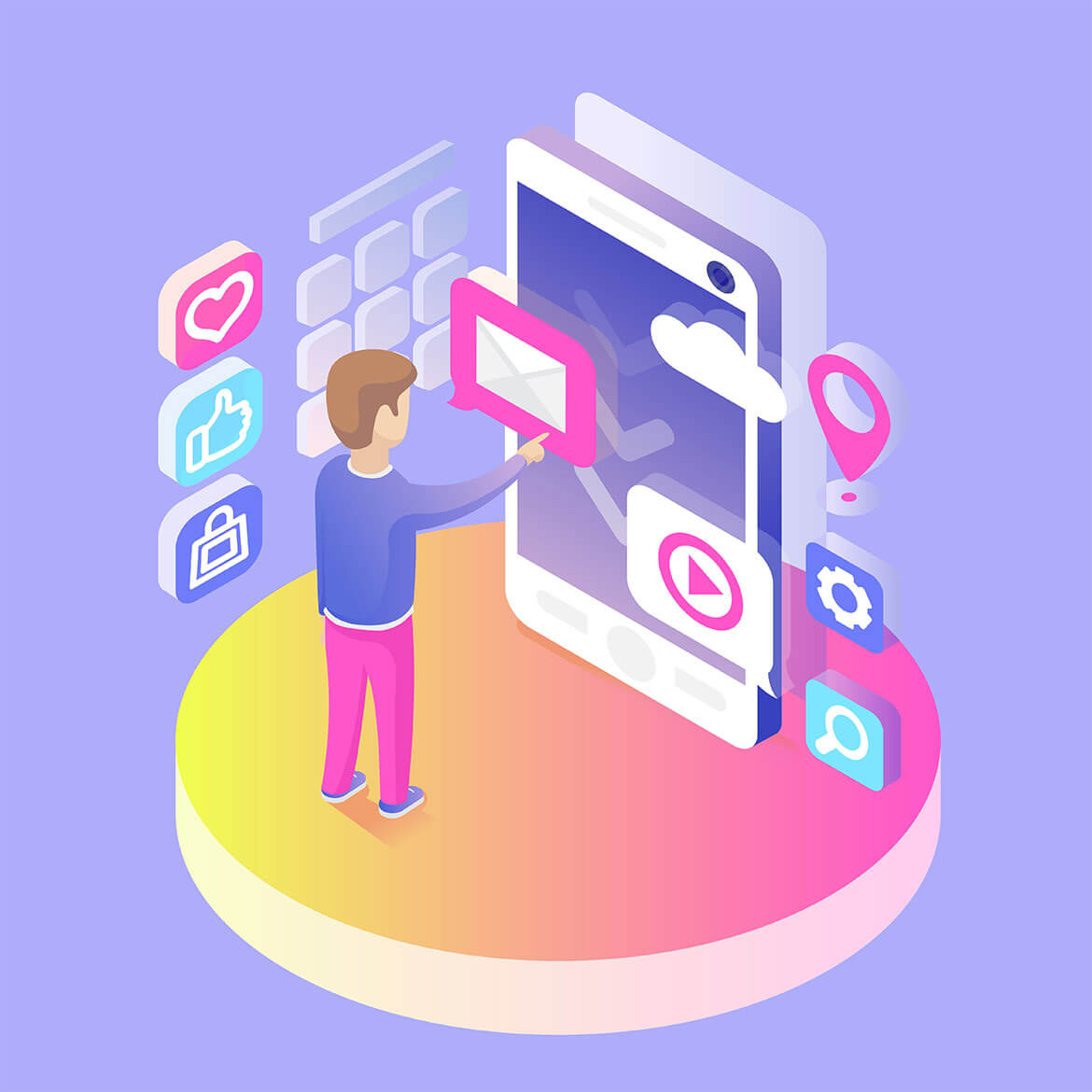
Why You Need One in 2025
📉 No strategy = wasted time and budget.
With algorithms constantly evolving and users expecting seamless experiences, winging it no longer works. A strategy helps you:
- Target the right people with the right message
- Choose platforms that fit your audience
- Set measurable goals (leads, sales, engagement)
- Track what’s working—and what’s not
📌 Read: What Is ROAS & How to Improve It
Key Elements of a Digital Marketing Strategy
✅ 1. Clear Business Goals
Start with SMART goals:
- Increase monthly leads by 30%
- Grow email list to 10K subscribers
- Boost e-commerce conversion rate to 3%
✅ 2. Deep Audience Research
Go beyond demographics—learn behaviors, pain points, and buying journeys. Use:
- Google Analytics
- Facebook Audience Insights
- Customer interviews
✅ 3. Channel Strategy
Pick platforms based on audience and ROI, not trends:
- SEO for long-term organic growth
- Google Ads for immediate visibility
- Email marketing for nurturing
- TikTok, IG, Facebook for reach and engagement
- Content marketing for authority
📌 See: SEO Campaign Checklist for Beginners
✅ 4. Content Plan & Messaging
Craft messaging that speaks to the customer’s pain points, not just product features. Use frameworks like:
- AIDA (Attention – Interest – Desire – Action)
- FAB (Features – Advantages – Benefits)
- PAS (Problem – Agitate – Solution)
Map your content to the funnel:
- Top: Blogs, reels, social content
- Middle: Case studies, email nurture
- Bottom: Testimonials, sales pages, demos
✅ 5. Budget Allocation
Divide budget by goals:
- 40% Paid ads (Search, Social)
- 20% SEO & content
- 15% Tools (Email, Analytics, CRM)
- 25% Creative (Design, Video, Copywriting)
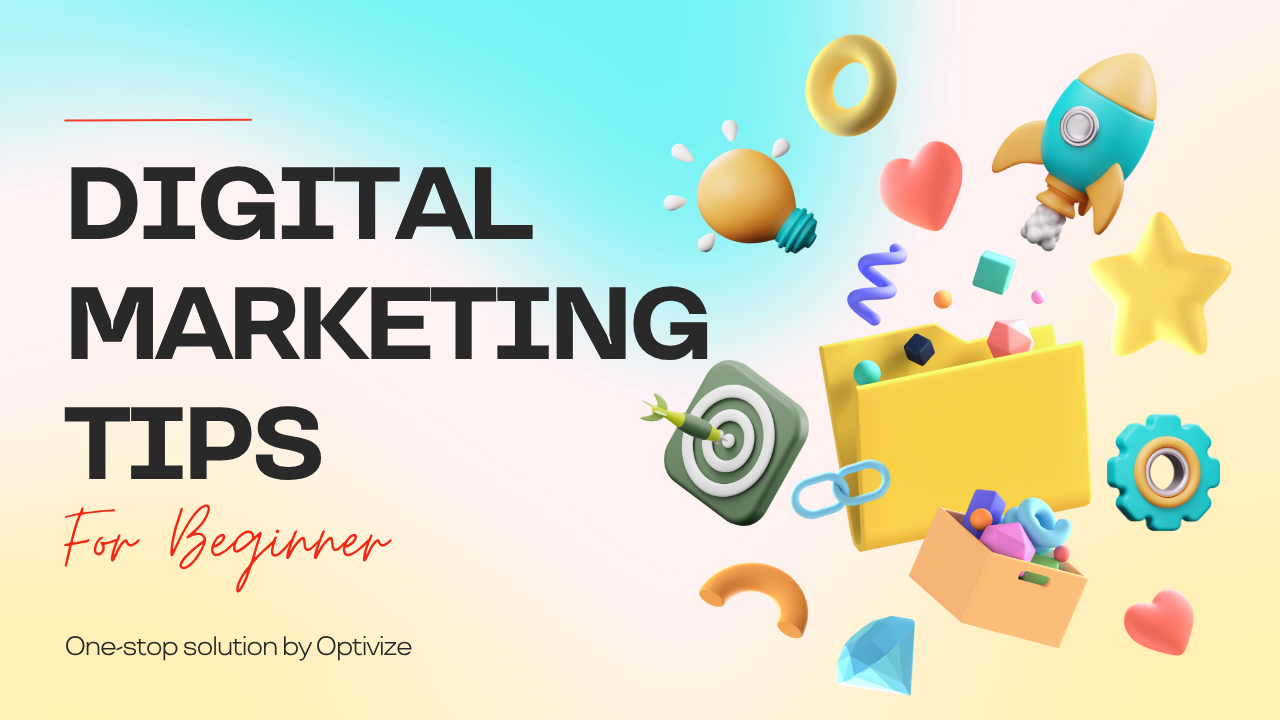
How to Track & Optimize Your Strategy
Don’t “set it and forget it.” A good strategy is iterative.
📊 Use KPIs like:
- ROAS
- CAC (Customer Acquisition Cost)
- CTR
- Conversion rate
- Customer LTV
📈 Use tools like:
- Google Analytics 4
- Meta Ads Manager
- Hotjar or Microsoft Clarity
- HubSpot or ActiveCampaign
Set monthly reviews to optimize based on data. Kill what doesn’t work. Double down on what does.
Final Thoughts
In a noisy online world, random acts of marketing won’t cut it anymore. A smart digital marketing strategy helps you stay focused, grow predictably, and stand out.
And the best part? You don’t need a huge budget—just clear goals, strong execution, and data-driven decisions.
Need a Digital Marketing Strategy That Works?
At Optivize, we help small and mid-sized businesses turn digital chaos into clarity.
📌 From SEO to social ads to full-funnel strategies—we’ll build a plan tailored to your goals.
👉 Get Your Free Strategy Session Today
No fluff. Just results.
On-page SEO Checklist for New Websites
Just launched your website? Use this on-page SEO checklist to make sure your site is ready to rank on Google. Free template included.
On-page SEO Checklist for New Websites (Free Template)
Launching a new website is exciting—but without a solid on-page SEO foundation, your site won’t show up where it matters: Google Search.
This checklist will help you optimize every important on-page SEO element step-by-step—perfect for founders, marketers, and developers. Bonus: Downloadable template included.
1. Keyword Research – Before You Touch the Page
💡 What to do:
- Identify primary keyword for each page.
- Find 2–3 supporting keywords (related/search intent match).
- Use tools like: Google Keyword Planner, Ahrefs, Ubersuggest, or Keywordtool.io.
✅ Example: For a service page →
Primary: “SEO services for startups”
Secondary: “affordable SEO packages”, “SEO agency for small business”


2. Optimized Title Tag & Meta Description
💡 What to do:
- Keep title tag under 60 characters and include the main keyword near the front.
- Meta description under 155 characters, written to attract clicks.
- Avoid duplicate titles/meta across pages.
✅ Example:
Title: Affordable SEO Services for Startups | Optivize
Meta: Get results-driven SEO built for startups. Transparent, flexible, and proven to work.
3. Clean & Keyword-Friendly URLs
💡 What to do:
- Use short, descriptive URLs with target keyword.
- Avoid unnecessary words or numbers (e.g.,
optivize.com/seo-for-startupsinstead ofoptivize.com/page?id=12)
✅ Tip: Use hyphens -, not underscores _.
4. Use Headings Strategically (H1 → H2 → H3)
💡 What to do:
- One H1 tag per page (should match the page topic).
- Break down content with H2s, H3s, etc. for readability & SEO.
- Include keywords naturally in headings.
✅ Bonus: Use headings to match search intent – e.g., use H2s like “How much does SEO cost?” or “Benefits of SEO for startups”.
5. Optimize Images and Use Alt Text
💡 What to do:
- Compress images to reduce load time.
- Use descriptive file names (e.g.,
seo-strategy-2025.png) - Add alt text with target keyword where relevant.
✅ Alt Text Example: “SEO strategy framework for startup websites in 2025”
6. Internal Linking
💡 What to do:
- Link to relevant pages within your website using anchor text.
- Helps Google crawl your site & distributes SEO authority.
“See our Google Ads Audit Guide”
7. Mobile & Page Speed Optimization
💡 What to do:
- Use responsive design (your Webflow site is likely mobile-ready ✅).
- Test your site on Google PageSpeed Insights and GTmetrix
- Optimize fonts, animations, and images for speed.
✅ Pro Tip: Avoid using heavy popups or autoplay videos on mobile.
8. Structured Data & Schema Markup
💡 What to do:
- Use schema markup for business info, articles, FAQs, reviews.
- Helps Google understand your content and show rich snippets in search.
✅ Tool: Use Schema Markup Generator by Merkle
9. Set Up Google Search Console & Sitemap
💡 What to do:
- Submit your XML sitemap to Google via Search Console
- Monitor crawl errors, indexing, and keyword queries.
- Check your robots.txt file and make sure no important pages are blocked.
✅ Bonus: Set up Google Analytics 4 (GA4) for performance tracking.
Bonus: Free On-page SEO Template (Download)
We’ve compiled all of these steps into a simple Google Sheets checklist you can copy and use across all your pages.
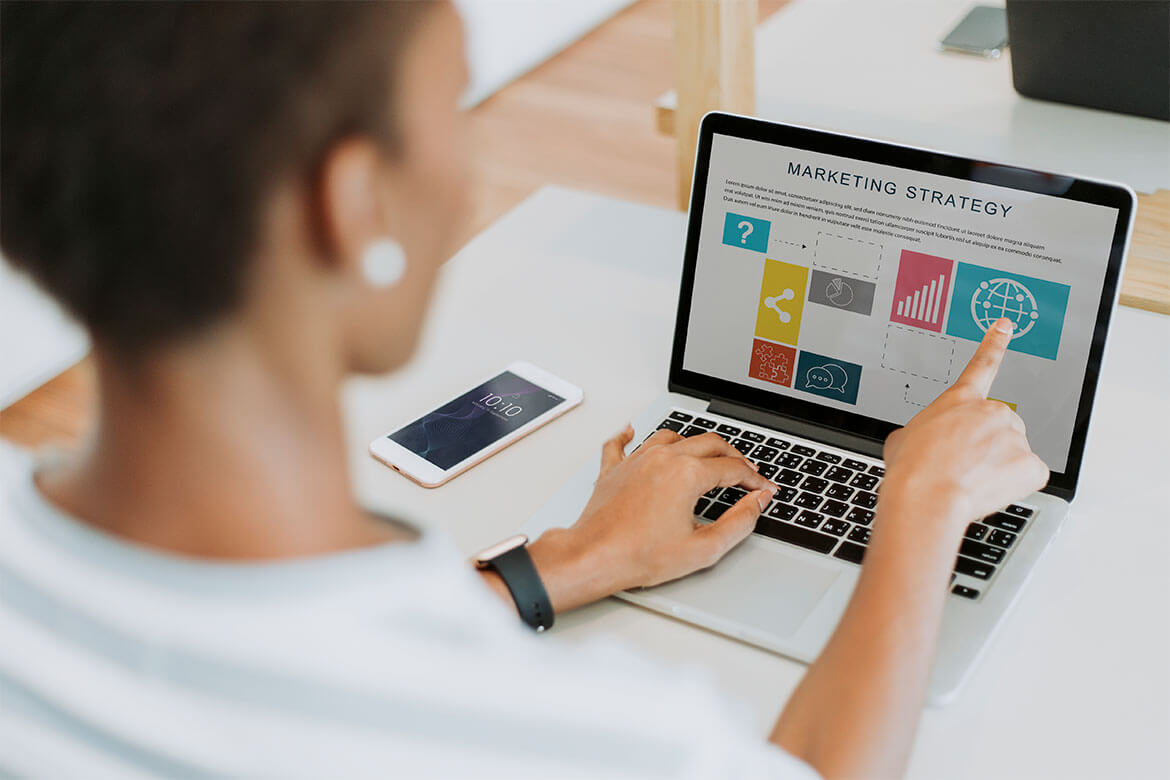
Need Help With SEO?
On-page SEO is just the beginning. At Optivize, we help businesses rank, convert, and grow through full-service SEO and performance marketing.
👉 Want us to audit your new site?
Get a free SEO audit + strategy call → Book Now
Why Your Business Needs a Custom Website (Not Just a Template)
Templated websites are cheap, but they cost you in the long run. Discover why a custom website design drives better performance, SEO, and brand credibility.
Why Your Business Needs a Custom Website (Not Just a Template)
In today’s digital-first world, your website isn’t just a brochure—it’s your 24/7 salesperson. But not all websites are created equal. Many small businesses rely on cheap templates or drag-and-drop builders and wonder why their conversions are low or SEO performance is flat.
In this article, we’ll break down why investing in a custom website is one of the smartest decisions you can make for long-term growth, performance, and brand trust.
1. Templates Limit Your Brand Identity
🧨 What’s the problem?
Using a generic template means your site looks like hundreds of others. There’s no unique structure, no storytelling through design, and you can’t fully tailor the user experience.
💡 How to fix it:
- Build a site around your actual business goals and buyer journey.
- Use custom illustrations, layouts, and UX elements that reflect your brand tone.
- Think beyond visuals—map the site to actions: leads, bookings, purchases.
✅ Pro Tip: Work with a UI/UX designer to audit your current site’s brand alignment.
2. Custom Websites Are Better for SEO
🧨 What’s the problem?
Templated sites often load slowly, have bloated code, and lack proper technical SEO structure. That kills your organic visibility.
💡 How to fix it:
- Optimize site architecture with custom page hierarchies and internal linking.
- Use semantic HTML tags and compress assets for performance.
- Implement schema markup and mobile-first responsive design.
3. You Get Control Over Speed & Performance
🧨 What’s the problem?
Many themes load unnecessary scripts, third-party fonts, and plugins—making your site sluggish. Google penalizes slow sites in rankings.
💡 How to fix it:
- Build from scratch using performance-first frameworks (Next.js, Astro, custom WP themes).
- Lazy-load images, self-host fonts, and defer non-critical scripts.
- Run audits using PageSpeed Insights, GTmetrix, and WebPageTest.
✅ Bonus tip: Under 3-second load time should be your baseline goal.
4. It Scales With You as You Grow
🧨 What’s the problem?
Outgrowing a template is common. Adding new features (multi-language, complex filters, customer portals) can break your theme.
💡 How to fix it:
- Design with scalability in mind: modular components, flexible CMS.
- Ensure integrations (CRMs, chatbots, APIs) are baked in, not bolted on.
- Keep your codebase maintainable and version-controlled.
5. Better UX = Better Conversions
🧨 What’s the problem?
Template builders don’t let you fully control the UX journey. Users drop off due to confusing flows, missing CTAs, or poor mobile usability.
💡 How to fix it:
- Build each page around 1 clear goal (subscribe, contact, buy).
- Use heatmaps, A/B testing, and user interviews to optimize UX over time.
- Customize micro-interactions, animations, and loading states for smoother flow.
✅ Bonus Tool: Try Hotjar or Microsoft Clarity for heatmaps and UX analytics.
Final Thoughts
Your website isn’t just about looking good—it’s about converting visitors into customers and giving them a reason to trust you. A custom-built website aligns design, performance, UX, and SEO into a single, scalable growth tool.
If you’re serious about building a long-term online presence, it’s time to stop renting your website—and build something that truly works for you.
Build Your Custom Website with Optivize
Ready to upgrade from generic to growth-focused?
✅ Get a free consultation and website audit from our expert team at Optivize.
We’ll show you exactly what’s holding your site back—and how to build a better one.
→ Schedule Your Free Website Audit
No tech jargon. No pushy sales. Just strategy that works.
Our experts will analyze your campaigns and send you a custom action plan — no strings attached.
What Is CRO? Conversion Rate Optimization Explained
Confused about CRO? Learn what Conversion Rate Optimization is, why it matters, and how it helps turn more website visitors into paying customers. Simple guide for beginners.
What Is CRO? Conversion Rate Optimization Explained
Ever wondered why your website gets traffic but not many conversions?
That’s where CRO – Conversion Rate Optimization – comes in. Whether you’re running an ecommerce store, a landing page, or a service website, CRO helps you get more results without needing more visitors.
In this beginner-friendly guide, we’ll explain what CRO is, why it matters, and how to start optimizing today.
What Exactly Is CRO?
🧠 CRO (Conversion Rate Optimization) is the process of improving your website or landing page so that more visitors take desired actions—like filling out a form, making a purchase, or signing up.
📊 Conversion Rate = (Number of Conversions / Total Visitors) × 100
For example:
If 1000 people visit your page and 50 convert → your conversion rate is 5%.
🎯 The goal of CRO is to increase that percentage, so you get more value from your existing traffic.
Why Is CRO Important?
💸 Because traffic is expensive—and conversions are what pay the bills.
If your ad brings in 10,000 visitors and only 1% buy, you’re losing 99% of the potential.
🚀 With CRO, you can:
- Lower your Cost per Acquisition (CPA)
- Improve your Return on Ad Spend (ROAS)
- Increase sales, leads, or sign-ups without increasing ad spend
✅ Example:
If your landing page conversion rate increases from 2% to 4%, you just doubled your results, with the same traffic.
What Counts as a “Conversion”?
It depends on your goals. Here are a few examples:
- E-commerce: A completed purchase
- SaaS: A free trial sign-up
- Local business: A contact form submission or phone call
- Blog: A newsletter subscription
💡 Tip: Define micro-conversions too—like button clicks or time on page—to help track user behavior during the CRO process.

How CRO Works: The Core Process
Here’s a simple 5-step CRO process used by most successful teams:
🧩 Step 1: Analyze Data
Use tools like Google Analytics, Hotjar, or Clarity to see:
- Where visitors drop off
- Which pages have high bounce rates
- How users interact with your page (scrolling, clicking, etc.)
🎯 Step 2: Identify Bottlenecks
Is the CTA unclear? Is your checkout page too long? Are people confused by the pricing?
This is where hypotheses are formed.
✍️ Step 3: Test Hypotheses
Change one element at a time and A/B test it.
Test things like:
- Headline variations
- CTA button color/text
- Layout/design changes
- Adding social proof or trust signals
📈 Step 4: Measure Results
Use conversion tracking to determine if your test increased conversions.
Track metrics like:
- Conversion rate
- Bounce rate
- Time on page
- Exit rate
🔁 Step 5: Repeat
CRO is not a one-time job. Keep testing and refining regularly.
CRO Tools You Should Know
Here are some essential tools to help with CRO:
- 🔍 Google Optimize (or its alternatives) – for A/B testing
- 🔥 Hotjar or Microsoft Clarity – heatmaps & session recordings
- 📊 Google Analytics 4 (GA4) – traffic + behavior tracking
- 🛠️ Unbounce, Webflow, WordPress + Elementor – for fast landing page editing
See our Landing Page Optimization Guide for deeper strategies on improving your conversion pages.
CRO Best Practices (Quick Checklist)
✅ One clear CTA per page
✅ Fast-loading, mobile-friendly pages
✅ Use trust signals (testimonials, reviews, security icons)
✅ Write benefit-driven copy
✅ Use high-quality visuals or videos
✅ Remove unnecessary fields in forms
✅ Add urgency or scarcity (limited-time offer, low stock alerts)
📥 Need a checklist?
→ Download our free CRO checklist below
Final Thoughts
CRO isn’t just about tweaking buttons—it’s about understanding users, reducing friction, and making every visit count.
Whether you’re running paid ads or building organic traffic, optimizing your conversion rate means more results without more traffic.
Start small. Test often. Improve continuously.
Want Help With Your Conversion Rate?
If you’re not sure why your site isn’t converting, let our team help you find out.
✅ Get a free CRO audit from our conversion specialists at Optivize.
We’ll review your key pages, highlight friction points, and provide a clear action plan to boost results.
→ Book Your Free CRO Audit Now
No obligations. Just honest feedback.
Book your free audit now
Our experts will analyze your campaigns and send you a custom action plan — no strings attached.
Landing Page vs. Website: What’s the Difference and Which One Do You Need?
Confused between a landing page and a website? Discover the key differences, use cases, pros, and cons to choose the right tool for your goals.
Landing Page vs. Website: What’s the Difference and Which One Do You Need?
When you’re building your online presence, one of the most common questions is:
“Should I create a landing page or a full website?”
Though they may seem similar, landing pages and websites serve very different purposes—and choosing the right one can make or break your marketing success.
Let’s break down the differences, when to use each, and how to decide based on your goals.
What Is a Landing Page?
A landing page is a standalone web page designed with one specific goal:
→ To convert visitors into leads or customers.
🔹 Common goals of a landing page:
- Capture emails
- Promote a product launch
- Run a limited-time offer
- Get sign-ups for a webinar
- Drive app downloads
🔹 Core features:
- One focused message
- Minimal navigation (often no header/footer)
- Strong Call-to-Action (CTA)
- Highly targeted content
✅ Use a landing page when:
- Running paid ads (Google Ads, Meta Ads, etc.)
- Promoting a specific campaign or offer
- Testing audience response (A/B testing)
What Is a Website?
A website is a multi-page online platform that acts as your digital storefront. It provides information about your brand, products/services, values, and more.
🔹 Core features of a website:
- Homepage, About, Services, Blog, Contact pages
- Menus & navigation
- SEO structure for long-term organic growth
- Often linked to other tools (CRM, ecommerce, etc.)
✅ Use a website when:
- You want to build brand presence online
- You’re offering multiple services/products
- You want to drive SEO traffic and build trust
- You need to share ongoing updates (via blog, portfolio, etc.)
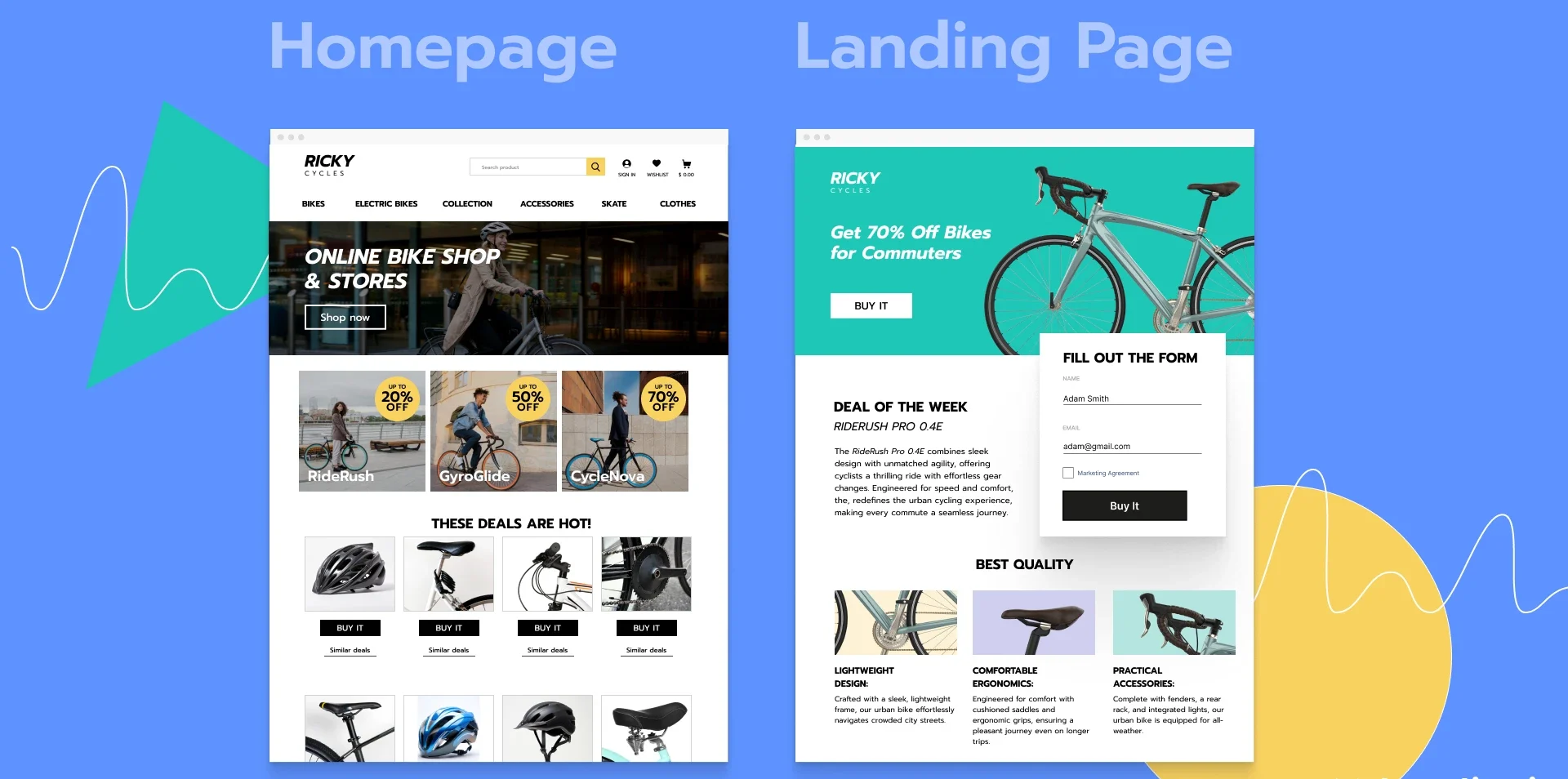
Key Differences: Landing Page vs. Website
| Feature | Landing Page | Website |
|---|---|---|
| Purpose | Single conversion goal | Full business presence |
| Content | Minimal, focused | Comprehensive, multi-page |
| Navigation | Usually none | Full navigation menu |
| SEO | Limited SEO impact | Long-term SEO asset |
| Best for | Ads, promotions, lead gen | Branding, information, organic growth |
| Load Speed | Fast and optimized | Can be heavier |
| Maintenance | Low (for single campaigns) | Medium to high |
Which One Do You Need?
💼 Choose a Landing Page if you:
- Run performance marketing campaigns
- Want to track and optimize conversions
- Have a specific, short-term goal
🌐 Choose a Website if you:
- Want to establish credibility and trust
- Plan to grow organically via SEO
- Need a platform to share your full brand story
⚡️ Best of Both Worlds:
Many successful businesses use both.
→ Drive paid ads to landing pages
→ Let organic traffic discover your website
Final Thoughts
Landing pages and websites aren’t rivals—they’re teammates.
Each plays a different role in your digital marketing strategy.
✅ Want higher conversions? Launch a landing page.
✅ Want long-term presence? Invest in a strong website.
✅ Want both? We’ll build them to work together.
Need Help Building High-Converting Pages?
Whether you need a fast landing page or a full brand website—we’ve got you.
🎯 Book a free consultation with Optivize.
We’ll help you:
- Plan the right structure
- Design for conversions
- Integrate with your ads or SEO campaigns
→ Let’s build something great together. [Contact Us Now]
SEO Campaign Checklist for Beginners: Your Step-by-Step Guide to Ranking Higher
New to SEO? Use this beginner-friendly SEO campaign checklist to set up your site for higher Google rankings. Simple, actionable, and effective.
Introduction
Starting your first SEO campaign can feel overwhelming. Algorithms, backlinks, keywords — where do you even begin?
This checklist breaks it all down into simple, actionable steps to help beginners set up and run a successful SEO campaign. Whether you’re running your own website or launching one for a client, this guide will get you on the right track.
1. Define Your SEO Goals
Before you start optimizing, you need a clear direction.
- Increase organic traffic?
- Rank for specific keywords?
- Boost local visibility?
- Improve conversions from search traffic?
📌 Pro Tip: Make your SEO goals measurable. For example: “Increase organic traffic by 20% in 3 months.”
2. Conduct Keyword Research
Find the search terms your audience is using. Focus on:
- Primary Keywords (e.g. “vegan skincare products”)
- Long-Tail Keywords (e.g. “best vegan skincare for dry skin”)
- LSI Keywords (related terms to enhance content)
🛠 Tools: Google Keyword Planner, Ahrefs, SEMrush, Ubersuggest
3. Audit Your Website
Run a technical SEO audit to spot issues like:
- Slow page speed
- Broken links (404 errors)
- Missing alt text
- Mobile responsiveness
- Duplicate content
🛠 Tools: Screaming Frog, Sitebulb, Ahrefs Site Audit, Google Search Console

4. On-Page Optimization
Optimize individual pages for both users and search engines:
- Use keywords in title tags, meta descriptions, and headers (H1–H3)
- Keep URLs short and readable
- Use internal linking to connect related pages
- Add relevant alt text to all images
- Optimize for featured snippets if possible
📌 Tip: Don’t keyword-stuff — write for humans first.
5. Create High-Quality, Valuable Content
Content is still king.
- Target user intent (informational, commercial, transactional)
- Use clear structure (intro, subheadings, bullet points)
- Add media (images, videos, infographics)
- Refresh old content regularly
🛠 Tools: Grammarly, Surfer SEO, Clearscope
6. Improve Site Speed & Mobile Experience
Google uses Core Web Vitals as a ranking factor.
- Compress images and use next-gen formats (WebP)
- Minify CSS, JS
- Enable browser caching
- Make sure your site is mobile-friendly
🛠 Tools: Google PageSpeed Insights, GTmetrix, Lighthouse
7. Build Backlinks (Ethically)
Google views backlinks as “votes of confidence.”
- Reach out to bloggers and publishers
- Get listed in relevant directories
- Use guest posting
- Create shareable content (stats, infographics, tools)
🛠 Tools: Ahrefs, BuzzSumo, Hunter.io
8. Set Up Tracking & Analytics
What gets measured gets improved.
- Google Analytics: Track sessions, bounce rate, conversions
- Google Search Console: Monitor impressions, CTR, indexing issues
- Rank Tracking Tools: Monitor your keyword rankings
9. Local SEO (If Applicable)
For local businesses:
- Claim and optimize your Google Business Profile
- Build local citations (Yelp, Foursquare, YellowPages)
- Get customer reviews with keywords
- Use schema markup for local business
10. Monitor, Test, and Improve
SEO isn’t a one-time task. It’s ongoing.
- Track changes in traffic and rankings weekly or monthly
- Run A/B tests on CTAs and meta descriptions
- Keep up with Google algorithm updates
📥 Download the Free On-Page SEO Checklist
Make implementation easy with our FREE downloadable checklist:
👉 Download Now
📩 Need Help With Your SEO Campaign?
Let us help you build an SEO strategy that works.
✅ Free SEO audit
✅ Transparent reporting
✅ White-hat methods only
👉 Contact Us Today or Fill Out the Form Below
Final Thoughts
This checklist gives beginners a roadmap to start and manage an effective SEO campaign. It’s not about doing everything at once — it’s about consistency, clarity, and continuous improvement.
